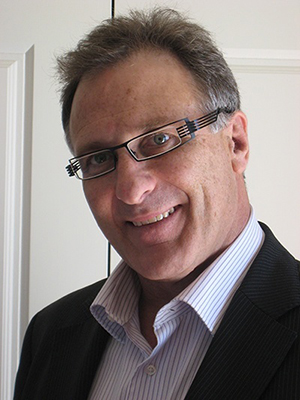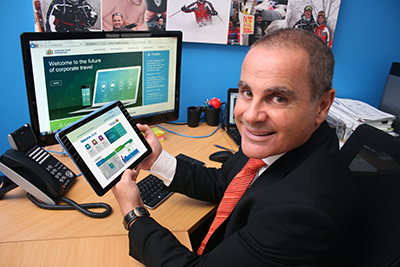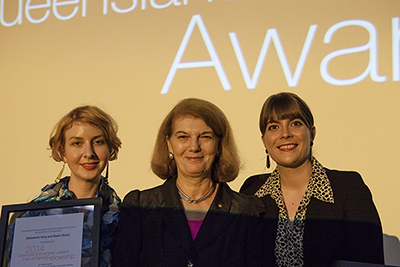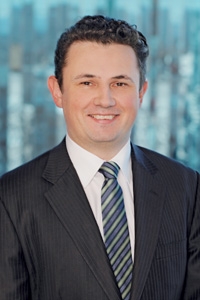EXTRA >> Business Acumen magazine editor Mike Sullivan delivered a shortened version of this article to Queensland Leaders in Brisbane on May 14, 2015.
YOU have probably all heard the American joke that came out at the height of the GFC …
“10 years ago we had Steve Jobs, Bob Hope and Johnny Cash - Now we have no Jobs, no Hope and no Cash.”
Well, my version of that was that about five years ago I had a just finished a 10-year renovation on our family home, I was well advanced on a loving restoration on a 1965 E-Type Jaguar, Business Acumen magazine was going along very nicely and its owning company had just taken on a new digital press, and I was personally looking at an investment property that was a former Macadamia nut farm.
By June 2012 I had no home, no Jag, no mag and, dare I say it, no nuts.
I’m glad you laughed at that, because when I told it to my wife, Tina, she did not laugh at all.
The problem with the downside of business, I found – when it all goes wrong, and even the parts of that which are totally out of your control – is that it affects the people around you, those you care about, just as much if not more: your family, your staff and, to some degree, your friends.
I’m a very lucky man. 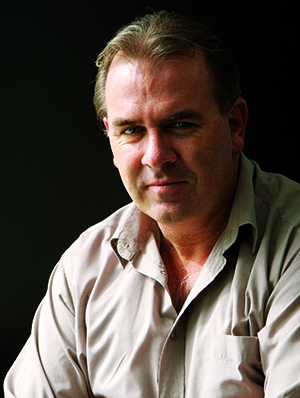
My wife immediately went out and took a night shift job with a secure mailing organisation when she could see the trajectory I was fighting to arrest.
She understood I had a small chance of success and I had to fight to keep the business going – all I needed was a modicum of luck and a ton of obstinacy – and she gave me the leeway to do that, making sure my family could keep functioning in the meantime. She is much smarter than me, much more practical.
Those of you who are fans of the TV show Air Crash Investigations will appreciate this. Just like an air crash, a situation like this is made up of a whole lot of disparate, sometimes minor, sometimes major events and mistakes that weirdly combine and prove very, very hard to contain. You have a few levers to pull, but you are unsure of which ones to use – and when.
Since we don’t have much time, I’d better quickly read this list of what happened out. (And because I hate talking about it).
Because, what happened after all this is the more important thing.
Business Acumen was developed out of a print and design company that I co-founded in 1998. We used the profits from the print business to develop Business Acumen in February 2004, because I thought Queensland would appreciate a statewide business magazine that focused on business innovation. I am a journalist and editor by profession, so I thought it would be a useful and profitable publication to do.
Besides, I also felt we had to diversify our business as we were reliant on just a few very large, but solid, print clients.
It went well, and our philosophy and positive approach, I think, drew James Paulsen and Stephen Beirne to invite us in to Queensland Leaders as a media partner in 2006. Our role was to continue doing what we were doing, helping to create business opportunity through publicity, giving special advantage to Queensland Leaders members and partners.
It was a high circulation magazine at that stage – Acumen reached 38,000 copies at its peak and was funded by advertising, with paid subscribers mainly being located outside of Queensland, where most of the circulation was free, but controlled, to reach business owners and leaders.
In my company in late 2007, the other major shareholder announced he was getting out of the printing industry and ‘hanging up the boots’ to pursue a career in property development, and he could do that if I cared to buy his shareholding from him. I did that, borrowing heavily.
The bank liked me and gave me a nice rolling bill of credit, secured over the family home. In the fine print was a note that they could potentially charge me 19% interest in “the unlikely event”of any default, but, like a quote from Leslie Nielsen in Flying High, don’t worry about that now ….
In 2008, a few things rolled through Australian financial markets, you might recall. There was a very big shudder in our advertising markets.
But Acumen was still going okay.
Unexpectedly, we lost our major printing contract to another printing firm – a printing firm that had, to their good fortune, recently been joined by a new shareholder who happened to know a lot about that particular contract, just in time to tender. Apparently property development was not the attraction it once was for my former business partner, who had only left our company seven months earlier …
About $3 million a year went out the door for us with just 30 days notice. We also lost close to $20,000 in unpaid pre-printed stock that was "not required" under advice from their new supplier.
But Acumen was still going okay.
And we still had one other large print client that was safely owned by one of Australia’s largest financial companies, MFS, later re-named Octavia … you know what happened there, setting a new record for a Queensland corporate collapse.
The company that bought our print client, in a trade sale, had its own print system set-up in Sydney, so we were ‘thanked away’ with immediate effect ... by e-mail. Again, we had about $10,000 in pre-printed stock that was "not required".
But Acumen was still going okay ….
Until …
Sky Air World collapsed owing us money.
MacAir collapsed, owing us money.
Several other long-term advertisers went under, owing us money. An office furniture company, an ICT company, a company we had spent a lot of money with on web development ...
TPP Worldwide, an advertising agency that booked government advertising with us, collapsed owing us lots of money.
Thinks looked dire, but it was not the end of the world as we had our major Acumen Yearbook publication about to be published – and that guaranteed a financial reprieve to give us time to restructure …
It was due to be printed on January 15, 2011. Our office was at that stage in an industrial estate at Archerfield.
We lost a week of production as we dismantled everything and put it up out of the way of the floods – and that was a very good move.
But what we did not count on was that the majority of our clients in the Queensland Yearbook, mostly regional councils and economic development organisations, were hammered by the floods. We could not publish because all bets were off with their investment attraction programs. We were asked not to publish by most of them.
The general Queensland advertising market was also devastated. We hung on and our very understanding staff agreed to reduced hours while we waited to produce the Yearbook – it took over a year before all parties were ready.
The ATO gave us a reprieve because of the floods, so we focused on paying others, and staying in business, but after a year they were in a collect-or-close mode (I was told by our liquidator much later that they had heard rumours of a directive that had come from Treasury to the ATO, desperate at that stage to get a Federal Budget into surplus). And we still had not produced the Yearbook. Meanwhile I was doing a merry dance with the ATO, proving our viability.
I hope the ATO system has changed since, but at that stage I was having to provide reams of financial information to them either by post or fax. There was no e-mail facility provided to the ATO. On several occasions I waited late into the night to fax up to 30 pages to them, as earlier in the day the fax would drop out, if you could get through at all. On one occasion only nine of our 29-pages faxed made it and we did not notice. This elicited yet another fine and triggered a 'statement of claim' for a meeting in court.
Suddenly I found we were only permitted to deal with the ATO’s appointed legal firm – and it was impossible to deal directly with an ATO officer. This was a very worrying development and we were right to be concerned.
I think it is virtually impossible to negotiate under these circumstances. I did manage to get through to one of the ATO case officers by phone on a single occasion and she sounded shocked that I had managed to get through. I was told all contact had to be through the external law firm appointed.
I think this is probably the biggest flaw in the way the ATO operates in relation to distressed companies.
Two court dates were adjourned at the ATO’s request while they kept evaluating our position.
We finally went to court on March 23, 2012 with our solicitor expecting to have our first request for an adjournment agreed, but it was not to be. The ATO’s legal team said its client wanted to proceed with the liquidation of the company immediately, as it did not believe the Yearbook would be produced, even after cross questioning from the Registrar suggesting they might consider a few weeks wait. I was sitting in the gallery with a printed copy of that Yearbook in my bag, one of 1000 that had been already printed and distributed of the 10,000 print run.
We would have had the income to settle the debt within three weeks. Our solicitor fumbled, and it was over.
Outside court I spoke with the ATO’s external legal team leader who, perhaps, realised the outcome was not ideal and suggested we go straight around to see the liquidator.
"He is a good guy and he may be able to do something. He is very practical. It's not necessarily over," I was told.
The liquidator welcomed me that afternoon, pleased to see that Acumen had run a story on his firm's support for business innovation in Queensland in our current edition. That I found ironic.
Their words were, “Gee, we didn’t expect to see you here today, Mike” as I walked in and showed them the Yearbook. They shook their heads. The liquidator's team considered the situation and said they wanted to help us to find a way to finish the print run and settle the debt.
Their immediate reaction was to ask me to prepare an offer to regain the rights to finish the Yearbook – but on the other hand they were also acting to shut the company down, control all of our income, remove the presses, and sell whatever they could get their hands on.
Needless to say, after weeks and weeks of effort, all I was really doing was writing the financial eulogy for the company as it was.
The liquidator wanted us to find a way to buy the publication rights back, pay for external printing (our presses were gone, back to the lessor) and distribution, pay for the staff, pay for the rent, pay for communications, bill the clients ... and they would collect all the money and pay us a pre-agreed production fee ... at some stage after all the money had been collected. We had no access to our accounts. I asked for $20,000 up front from the funds they already had collected, to achieve publication of the Yearbook, but they were unfortunately unable to agree to that request.
So that was the end of it.
But this is where this organisation, Queensland Leaders, that I had joined to assist, became of great assistance to me in turning things around.
I remember telling James about dealing with the liquidator and the plan to finish printing the Yearbook, then get on with business and he said, sagely: “Mike, the Liquidator is not your friend.” How true.
The fallout of it all became as much a mental struggle as it was a physical day-to-day business one, and I began to draw from others’ experiences, including several people from Queensland Leaders.
One of them that I won’t name as he thinks no-one know he swears, said, “Mike, I’ve been through that shit. Don’t worry about it. Put all that shit behind you and do what you know you need to do.”
It was just the rev up I needed, to stop wallowing in self pity. Reminded me of one of my old football coaches.
And more sage advice from Stephen and James came in a later meeting (they used to check up on me, very kindly, from time to time), when they said, “Mike, you are basically in a start-up phase again. The good thing about that is, you can build it the way you need it to be, to suit today’s business environment, not build it the same way as it was.”
That was good advice at precisely the right time.
Extremely fortunately, through a very old planning mistake, it turned out our website and electronic assets were actually owned by a different company, Screamer Media, and we were able to continue publishing online while we negotiated with the liquidator to regain any other rights associated with Business Acumen, which Screamer later bought back.
I say we, because crucial to achieving this were a few key staff, who worked part time for us, and our bookkeeper, who invested in us and found investment for us, and several partners who were willing to collaborate with us to re-shape and rebuild Business Acumen.
What you see today is about stage 7 out of 10 of that rebuild.
We have partnered with a web development and online training organisation to rebuild our digital presence. They are based in Brisbane, but we are their only Australian client.
Apart from a whiz-bang website, we have structured our content so that only subscribers can access and search our archives and subscribers also have access to extra stories, extended stories and useful research not available to the general public.
We now prioritise stories from and featuring our subscribers, which includes Queensland Leaders, Victorian Leaders and NSW Leaders companies. That means everyone here, and there are flyers here tonight that give you a coupon code so you can all gain digital subscriber access.
We are also part of a new digital business and economic development platform, which helps business owners, and its prototype is now open to view at www.digitalQLD.com.au. Other versions of this, all connected, are being developed for specific regions and specific industries.
We believe this is a world-leading innovation and we think it is going to make a positive difference to business owners and leaders in Australia, and perhaps beyond, well into the future.
Perhaps best of all, we are back in print. We now do editions for Victorian Leaders and we are doing our first for NSW as well, adjusting content in those editions to suit the Leaders groups.
We print these magazines ourselves on a digital press that we own outright and it was Queensland Leaders, again, that proved pivotal to that decision.
While all our competitors have abandoned print to go online, we took the advice of many Queensland Leaders CEOs who told us that they had lost contact with us since we’d been out of print. Business Acumen magazine had travelled with them and was looked at in their spare moments on flights, in airport lounges etc.
Some of those CEOs had a habit of sticking post-it notes on relevant articles in the magazine and passing it on to others in their companies. Some did that for knowledge, some did it for prospecting. By not being in print for two years, we had lost that relationship.
So, my overall message is that no matter what your business is going through, whether it is rapid growth or the equivalent of an air crash, you need to know who to trust and who to turn to.
I know from experience that some of the best people you can turn to are in this room and part of the extended Leaders groups.
Apart from an understanding family, I’d say Queensland Leaders is the next place to turn to. It is an invaluable resource, whether you are building a business or re-shaping one.
You just have to ask. You will be heartened and amazed.
And one last analogy from Air Crash Investigations … statistically speaking, business is still the safest and fastest way to reach your lifestyle aspirations. Brace yourself, but enjoy the journey.
#ends
